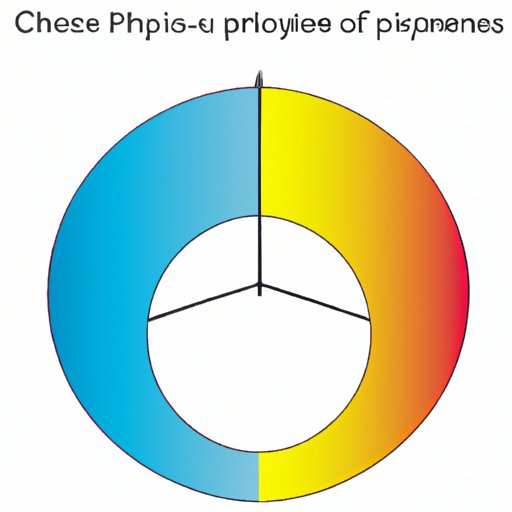
Introduction
Physical science is a broad term that encompasses several natural sciences, including physics, chemistry, geology, and astronomy. But is physics and other fields that fall under the category of physical science? This article aims to explore the fundamentals of physics and its relationship to physical science as a whole.
Exploring the Fundamentals of Physics: A Comprehensive Look at Physical Science
Physics is a natural science that explores the behavior and properties of matter and energy in the universe. It seeks to explain how the natural world works using observations and experiments based on mathematical models. Physics is often described as the most fundamental of all sciences because it serves as the foundation for other fields of natural sciences.
Physical science, on the other hand, is a term used to describe the study of the natural world as a whole, including the physical, chemical, and geological properties of matter and energy. It seeks to describe how the natural world works from different approaches, including mathematics, observation, and theory.
Therefore, physics is considered as one of the many branches of physical science, along with chemistry and geology, among others. Physics is the cornerstone of physical science because it provides the fundamental laws and theories that underpin the other disciplines.
A brief history of physical science reveals that physics predates every other field of natural sciences. Physicists of ancient times, such as Aristotle and Archimedes, were some of the first people to study the physical world systematically. During the Scientific Revolution of the 16th and 17th centuries, physics exploded as a field of study, with figures like Galileo Galilei, Isaac Newton, and Johannes Kepler leading the way. Today, the discipline continues to thrive, with thousands of physicists working in universities, research facilities, and other organizations.

Why Physics is Considered a Branch of Physical Science
As mentioned earlier, physical science is an umbrella term used to describe all the natural sciences that seek to understand the physical, chemical, and geological properties of matter and energy. It is a broad field of studying involving several disciplines, including physics.
Physics is considered a branch of physical science because it probes the behavior and properties of matter and energy, which lie at the heart of physical science. The study of physics provides a foundation that allows other disciplines under physical science to analyze the natural world systematically. Physics helps scientists understand the underlying physical mechanisms behind the natural phenomena that other branches of physical science study and analyze.
Physics and Its Relation to Other Branches of Natural Sciences
Physical science has several branches that seek to understand different aspects of the physical world. The primary branches of physical science include physics, chemistry, geosciences, and astronomy.
Chemistry, for instance, involves the study of matter and the chemical reactions between atoms and molecules. Geosciences, on the other hand, focus on the study of the Earth’s physical properties, including its structure and processes. Astronomy, which is also known as astrophysics, involves the study of the universe, including stars, planets, galaxies, and other celestial phenomena.
Physics and these other branches of natural sciences are related because they all rely on mathematical models and scientific theories to explain the physical world. Physics provides the fundamental laws that describe the behavior and properties of matter and energy, which other disciplines build on to explain other natural phenomena.
From Classical to Quantum Physics: Understanding the Evolution of Physical Science
Physics has undergone significant developments over the years, with new theories and principles being discovered regularly. The earliest significant advancement in physics was the representation of motion by Aristotle in ancient times. During the Scientific Revolution of the 16th and 17th centuries, there was a breakthrough in the understanding of the laws of physics.
The discovery of calculus by Isaac Newton and the formulation of laws of motion were some of the significant breakthroughs in classical physics. During the 20th century, quantum physics emerged, challenging classical physics and introducing new theories about the behavior of subatomic particles.
Theories such as Albert Einstein’s theory of relativity and Max Planck’s quantum theory revolutionized the field of physics. Quantum mechanics also introduced new areas of research, including particle physics, quantum field theory, and string theory, among others.
The Role of Mathematics in Physics: Bridging the Gap between Theory and Experiment
Mathematics is an essential tool in physics, serving as a bridge between theory and experiment. Mathematical models help physicists represent the natural world through equations and formulas, allowing them to test hypotheses, make predictions, and develop new theories.
Mathematical models have helped physicists understand fundamental concepts such as energy, momentum, and force. Examples of mathematical models in physics include Newton’s laws of motion, Einstein’s equations of special and general relativity, and Schrodinger’s equation in quantum mechanics.
Applications of Physics in Real-World Scenarios: A Practical Approach to Physical Science
Physics has significant practical applications in several fields, including engineering, medicine, and technology. Understanding the fundamental principles of physics has led to the development of technologies that have transformed society in countless ways.
Applications of physics in real-world scenarios include optical fibers, nuclear power, magnetic resonance imaging (MRI), and superconductivity. MRI, for instance, has revolutionized medical diagnosis, while superconductivity has allowed scientists to develop faster computer processors and more efficient power grids.
Physics continues to drive innovation in various industries, leading to new technologies that improve health, transportation, and energy production, among others.
Future Frontiers of Physics: Innovations and Discoveries in the World of Physical Science
Physics is a rapidly evolving field that continues to offer opportunities for innovation and discovery. There are several areas of research in physics that hold great promise for the future.
One of the frontiers of physics is cosmology, which involves the study of the universe’s structure and origin. Another significant area of research is nanotechnology, which aims to manipulate materials at the molecular and atomic level.
Other areas of future frontiers in physics include the development of materials with remarkable properties, the development of quantum computers, and the investigation of the nature of dark matter and dark energy.
Conclusion
Physics is one of the core areas of physical science and plays a crucial role in helping to understand the natural world. By delving into the behavior and properties of matter and energy, physicists have made significant contributions to society, leading to new technologies and innovations. Physics has evolved significantly over time, and new theories and discoveries continue to be made as scientists seek to understand the mysteries of the universe.
As we look to the future, physics will continue to offer new opportunities and challenges, and it will undoubtedly play an essential role in shaping the world we live in.




